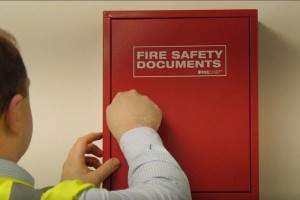Recently added item(s)
You have no items in your basket.

Current fire safety legislation requires that an adequate system of maintenance be in place for fire safety measures in a building. This includes a variety of tasks, some of which can be carried out in house by site staff, others by external specialists.
Common tasks include:
Unplanned events can also occur such as false alarms, fire officer visits and faults on systems.
It is important to keep track of all these events to ensure that maintenance is being carried out (and is done correctly, e.g., using different call points each week not just the same one or two), that faults are noted and resolved, and any false alarm trends identified for resolution.
The easiest way of doing this is via the fire logbook. Previously a statutory condition of fire certificates under old legislation, maintaining a fire logbook is still a convenient way of centrally recording evidence of your compliance with the legal duty to adequately maintain fire precautions.
Pre-printed A4 or A5 size logbooks are readily available with all the most common records ready to complete in handy tables and also often include useful reminders of the relevant test/service regime and standards at the start of each section.
Having a fire logbook is one thing but finding it when you need it, can be another! It’s useful to have your logbook near the entrance where your fire alarm control panel is usually sited, in a handy document holder or document cabinet. This way it is readily available at all times, including out of hours when the emergency services may need to attend should an incident occurs. As a result, it is a good idea to hold other useful information in the cabinet to aid emergency services, such as plans of the building with service isolation points and high-risk areas marked on, emergency contact/key holder details and much more.
These cabinets should be clearly marked and robust and often are red in colour to help identification.
The role of document cabinets is recognised by the fact that in high rise residential buildings it will be a requirement to provide them (called Premises Information Boxes) and include a range of set information in them under new legislation.
Fire Depot has been the UK's favourite fire safety supplier for over 50 years, we know the fire protection and prevention business inside out. Our experienced team can offer advice and guidance about any of our fire safety products. For expert help and advice, please contact the Fire Depot team on 0330 999 2233, email us at sales@firedepot.co.ukor visit https://www.firedepot.co.uk/ to see our full range of fire safety products.
The information contained within this blog is provided solely for general informational and educational purposes and is not intended as a substitute for professional advice. Before taking any actions based upon this information, we advise the reader to consult any and all relevant statutory or regulatory guidance and where felt necessary to consult a qualified fire or industry regulation professional. The use or reliance on any information contained herein is solely at the reader’s risk.